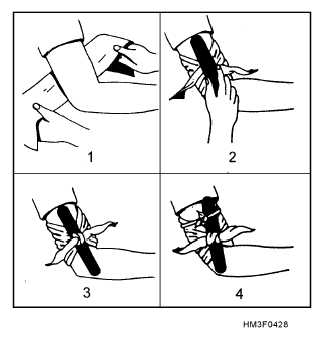If you've ever taken a Standard First Aid course (like the one offered at your nearest Red Cross), chances are that making use of a tourniquet to stop bleeding is not covered. At best, it is advised to use it only in the most serious situations, and at worst the method is frowned upon entirely. The concern is that while it may stop the bleeding from the wound area, it prevents blood circulation from reaching the entire extremity or limb damaging cells, tissues and nerves which leads them to eventually die (necrosis). If this happens, amputation or cutting off the limb is the only solution.
This is why the preferred method for stopping bleeding has been to apply direct pressure on the wound and elevate the limb above the heart.
Case in point, the link below on the "dangers" of utilizing it -
This one though is a lot more neutral in tone, but note the cautionary texts -
I then came across this interesting article in my readings of TCCC. Though the theme is more for HIT and not on civilian protocols, the article does point out the "3 acceptable uses" of tourniquets by the International Committee of the Red Cross (ICRC).
IMHO, there is a place for it, as it did and continually has been saving lives in the battlefield or in remote areas. This is especially true in cases of severe trauma. The vid below for a simple instructional -
Important things to note:
- It should only be employed as a last resort like in cases of severe bleeding. Seek medical attention ASAP.
- It should only be applied on extremities or limbs.
- The material to apply it with should be flat with a wide surface area like a folded bandanna, belt or bandage, NOT with something thin or round like chord or wire.
- Keep it two or three (2” – 3”) above the wound (an inch is roughly the size of a finger width), between the body and the extremity/limb.
- Tighten until bleeding stops.
- Don’t apply on joints such as wrists, elbows or knees.
- It can be safely left tightened for one (1) hour, then check the wound by loosening it and applying direct pressure on the wound. If the same bleeding persists, re-apply the tourniquet. If the bleeding has slowed, loosen it while applying direct pressure.
- Make note of the time it was applied or indicate by writing it (the letters "TK" has also been suggested) and the time it was applied on any two (2) areas of the victim’s body such as one on the forehead and the other on the injured limb. This is for medical assessment.





No comments:
Post a Comment